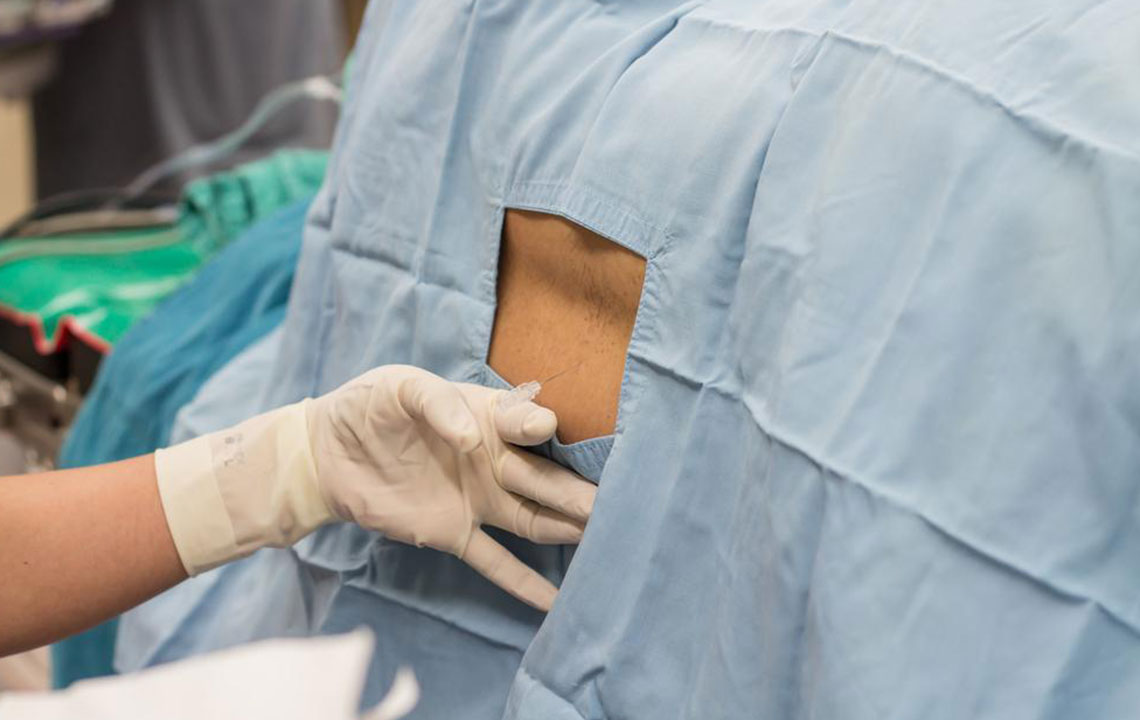Comprehensive Guide to Percutaneous Laser Therapy for Lumbar Disc Herniation: A Modern Minimally Invasive Solution
Percutaneous laser therapy is a minimally invasive treatment for lumbar disc herniation that offers rapid pain relief with fewer complications compared to traditional surgery. This guide explores its development, benefits, procedure, and effectiveness, highlighting why it is becoming a preferred choice for many patients suffering from herniated discs.

Comprehensive Guide to Percutaneous Laser Therapy for Lumbar Disc Herniation: A Modern Minimally Invasive Solution
Lower back pain caused by lumbar disc herniation is a prevalent condition that affects millions worldwide, impacting quality of life and daily functioning. Over the years, medical advances have led to the development of minimally invasive treatments aimed at relieving symptoms while reducing recovery time. One such innovative technique gaining popularity is percutaneous laser therapy, a cutting-edge approach that offers hope for patients seeking effective relief without the risks associated with traditional open surgeries.
Understanding lumbar disc herniation requires knowledge of spinal anatomy and the pathological processes that lead to pain and nerve compression. The lumbar spine comprises five vertebrae, which are cushioned by intervertebral discs acting as shock absorbers. When these discs degenerate or sustain injury, their inner gel-like core—called the nucleus pulposus—can protrude through the outer layer, known as the annulus fibrosus. Depending on the extent and position of this protrusion, symptoms can range from localized back discomfort to radiating leg pain, numbness, and muscle weakness, often following the sciatic nerve pathway.
Traditionally, treatment options for lumbar disc herniation ranged from conservative measures—such as physical therapy, medications, and corticosteroid injections—to surgical interventions like open discectomy or spinal fusion. While conservative treatments are effective for many, some patients experience persistent or worsening symptoms, necessitating surgical solutions. Conventional open surgery, though often successful, involves significant tissue disruption, longer recovery periods, and increased risks, prompting the medical community to explore less invasive alternatives.
The evolution of minimally invasive techniques began in the late 20th century with the advent of procedures like percutaneous disc decompression. Among these, laser-based therapies, introduced and refined over the last few decades, have emerged as promising options. The concept of applying laser energy for disc decompression was pioneered during the 1980s, with the first procedures documented in the late 1980s and early 1990s. The U.S. Food and Drug Administration (FDA) officially approved laserdisc decompression techniques in 1991, marking a significant milestone in spine surgery and minimally invasive procedures.
Percutaneous laser therapy involves inserting a thin needle or cannula into the affected disc under local anesthesia, guided by fluoroscopy or other imaging modalities. Once positioned, a laser fiber is introduced through the cannula to deliver controlled laser energy directly into the nucleus pulposus. The laser's heat causes vaporization of the disc material, leading to shrinkage and reduction in disc volume. This process alleviates pressure on nearby nerve roots and reduces inflammation, thereby easing pain and improving mobility.
The procedure is particularly effective for contained disc herniations, where the herniated material remains within the disc margins, making it easier to target without disturbing the surrounding tissues. It is less suitable for extruded or sequestrated discs, which often require different surgical approaches.
Since the initial pioneering work by Choy and colleagues in 1986, numerous clinical studies and trials have evaluated the efficacy and safety of laser disc decompression. These studies have consistently reported high success rates, often exceeding 80%, in appropriately selected patients. Patients typically experience rapid pain relief, with minimal downtime and lower complication rates compared to traditional open surgeries.
Compared to conventional discectomy, laser therapy offers several advantages. Its minimally invasive nature results in smaller incisions, less tissue trauma, reduced blood loss, and shorter hospital stays. Recovery tends to be faster, enabling patients to resume daily activities within days rather than weeks. Furthermore, the outpatient procedure can often be repeated if necessary, providing a flexible treatment pathway for recurring or residual disc issues.
Despite its benefits, percutaneous laser therapy also has limitations. Not all patients are suitable candidates, and accurate diagnosis with appropriate imaging is crucial. Moreover, long-term outcomes are still being studied, although current data suggest sustained relief in many cases. As technology advances, newer laser systems and improved imaging guidance continue to enhance the precision and safety of this technique.
In conclusion, percutaneous laser therapy represents a significant advancement in the treatment of lumbar disc herniation, especially for patients who seek effective relief with minimal invasiveness. As research continues and technology improves, it is expected that laser-based procedures will become an increasingly common choice in the spectrum of spine-related treatments. If you are experiencing persistent lower back pain associated with disc herniation, consulting with a spine specialist about minimally invasive options like laser therapy could be a step towards an improved quality of life.





